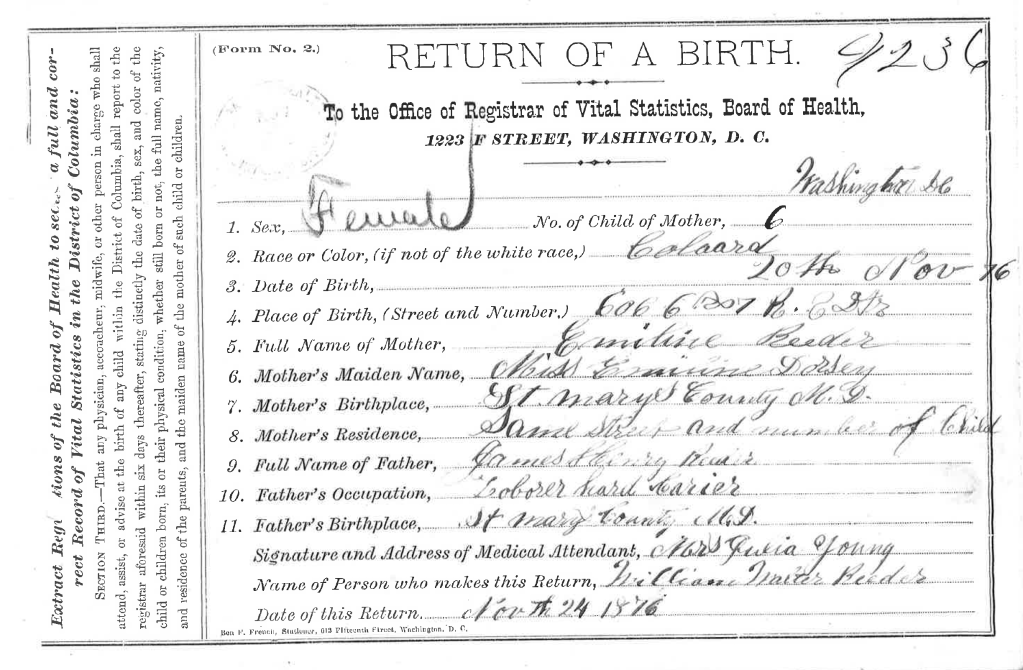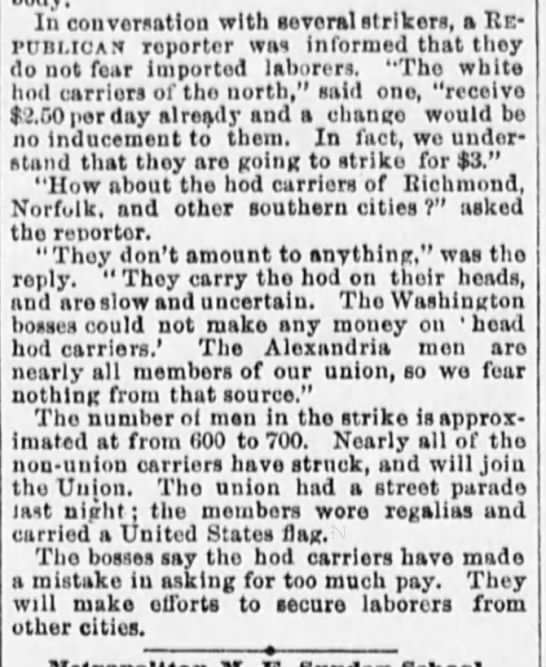Known Information
Multiple documents connect the Reeders to St. Mary’s County.
Sources
ST. MARY’S COUNTY
COMMISSIONER OF SLAVE STATISTICS
(Slave Statistics)
1867-1869
C1698 | Maryland State Archives
The following documents suggest St. Mary’s County as a place of research for the Reeder family:
- James Henry Reeder listed St Mary’s County on his service records and the Freedman’s Bank records
- John Reeder listed St Mary’s County on his USCT service records and his marriage records in the Freedmen’s Bureau Records
- James Henry Reeder and Emeline Dorsey Reeder listed St. Mary’s County on a birth return for two children
- John and Cora Key Reeder listed St. Mary’s County on a birth return for two children
Slave Statistics
Emeline Dorsey, wife of James Henry Reeder
John Milburn reported enslaved nineteen people, including a Dorsey family group.
| Enslaved Individuals | Age |
|---|---|
| Mary Dorsey | 45 |
| Emeline Dorsey | 25 |
| Catherine Dorsey | 23 |
| William Dorsey | 19 |
| Josiah Dorsey | 16 |
| Susan Dorsey | 11 |
| Philmore Dorsey | 8 |
| Mary Dorsey | 4 |
In 1867, the Maryland General Assembly ordered that enslavers provide lists the individuals they enslaved in 1864. These lists were to be submitted to the federal government in hopes of federal compensation the enlistment of enslaved individuals into the Union Army. No compensation was provided. The records however, include the enslaver’s name, the first and last name of the enslaved as well as their age and gender, allowing the researcher to go past the 1870 census to track family groups and households. Slave statistics survive for Anne Arundel, Dorchester, Frederick, Howard, Kent, Montgomery, Prince George’s and St. Mary’s counties.
Cora Kee/Key, wife of John Reeder
The Freedmen’s Bureau records indicate that Cora and John were married in 1861 by a priest with the last name Moore. This suggests that both Cora Kee and Cora Reeder should be used as search terms in the Slave Statistics. Cora Kee/Key is not listed. Cornore Reeder is.
John A Crane enslaved twenty two individuals, including Cornore Reeder, age 20 and Mary Alice, age 2. John and Cora Reeder listed one child on their marriage report; it is possible that Mary Alice is that child. In the 1880 Census, they list another daughter named Alice who was born in 1877 suggesting that Alice is a family name.
In the 1870 Census, Cora and John Reeder have three individuals with the surname Key living in their household: Mary, Caroline and James. George H. Morgan reported enslaving 24 people, including a family group of Keys.
| Enslaved Individual | Age |
|---|---|
| Cecelia Key | 25 (Left, Nov 11, 1863) |
| Jack Key | 6 (Left, Nov 11, 1863) |
| Elizabeth Key | 8 (Left, Nov 11, 1863) |
| Sarah A Key | 23 |
| James Key | 5 |
| Mary Key | 10 |
Jane Reeder, mother of the Reeders
Mrs. Ann E Chiveral listed enslaving one individual: Jane Reeder, age 46.
She left with the Union Army on 20 Feb 1863.
the Reeders
Edward L Abell listed 28 enslaved individuals under his own name, and six as guardian for the Smith children. The six individuals appear on both lists, and include James (19), John (30), Thomas (21), and Mary Ellen Reeder (16).
He noted that they left with the Union Army:
- Thomas Reeder left first: 14 Sept 1862
- James Reeder left: 17 Oct 1863
- John and Mary Ellen left: 28 Oct 1863
Thomas Reeder
James L Foxwell reported enslaving thirty individuals, among them Thomas Reeder, age 45. This Thomas is too old to be Thomas Reeder in DC, and is of a similar age as Jane Reeder, suggesting he may be a brother or spouse of Jane.
Further Research Needed:
- Identify the land of the enslavers: Milburn, Foxwell, Chiveral, Smith and Abell
- Locate inventories related to the enslavers and their family which may contain names of family members and/or the family groups.
















